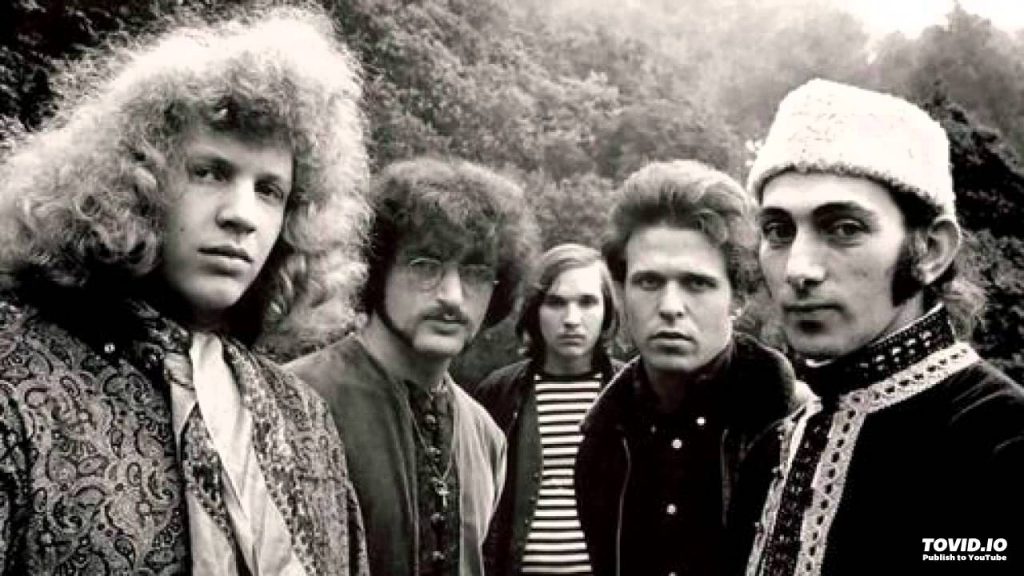A 50 Year Flashback to Country Joe & the Fish-Electric Music for the Mind and Body
Written by John Diliberto on May 10, 2017
 Long before Techno and EDM were creating deep cerebrum massages, there was Country Joe and the Fish with their 1967 debut album, Electric Music for the Mind and Body.
Long before Techno and EDM were creating deep cerebrum massages, there was Country Joe and the Fish with their 1967 debut album, Electric Music for the Mind and Body.
Country Joe and the Fish will forever be known for the “Fish Cheer,” which Country Joe famously sang solo at the Woodstock festival, changing the G-rated “Give me an F. Give me an I. Give me an S. Give me an H. to “Give me an F. Give me a U. Give me a C. Give me a K.” What’s that spell? But they were one of the early signature bands of the late-sixties San Francisco music scene and the Summer of Love.
The band started with Joe McDonald, a navy veteran and guitarist Barry Melton who played to accompany events by the Students for a Democratic Society in Berkeley California. They were both folkies until they plugged in their guitars and plugged in their minds with LSD. Electric Music for the Mind and Body was conceived, arranged and recorded under the influence. When they went into the studio to make EMFTMAB in February of 1967, they brought their political agitprop with them, but laced it with hallucinogenic moods.
Joe MacDonald wrote and sang most of the songs, from trippy dreams to political anthems. Barry Melton brought the psychedelic touch to their folk and blues based sound. They were joined by second lead guitarist David Cohen, who also played the signature Farfisa organ sound, bassist Bruce Barthol, and drummer Gary “Chicken” Hirsh. Released on May 11, 1967, it was in that first wave of California psychedelic music, sitting in there with debuts by the Grateful Dead, The Doors, and the Jefferson Airplanes’ second album, Surrealistic Pillow.
Electric Music for the Mind and Body is just a great name for the band’s intent, to take you on a psychedelic journey. Each side began with a screaming rocker, “Flying High” on side one, “Superbird” on side two, but got progressively spacier till the concluding tracks, “Section 43” and “Grace” ending sides one and two respectively.
 Their hit was the country-psychedelia of “Not So Sweet Martha Lorraine” but they explored extended instrumentals like “Section 43” which goes from raga to bluegrass and beyond. “Grace” is a hypnotic tune that ended the album. It was inspired by Jefferson Airplane singer Grace Slick when she was still with a band called The Great Society. It has a surprising renaissance feel to it, with lots of effects like chimes and water drops that make it sound like a precursor to New Age music.
Their hit was the country-psychedelia of “Not So Sweet Martha Lorraine” but they explored extended instrumentals like “Section 43” which goes from raga to bluegrass and beyond. “Grace” is a hypnotic tune that ended the album. It was inspired by Jefferson Airplane singer Grace Slick when she was still with a band called The Great Society. It has a surprising renaissance feel to it, with lots of effects like chimes and water drops that make it sound like a precursor to New Age music.
“Bass Strings,” was another epic track, an unabashed hymn to psychotropic drugs. Listen close and you could hear them whisper “LSD” at the end, a post-production addition of which they are all embarrassed by now. That song had all the early Country Joe signatures, trippy lyrics, acid guitar, spacey Farfisa organ and lots of space.
The lasting influence of CJFish may be hard to delineate. Certainly the Jefferson Airplane and the Dead became much more free-form in the wake of Electric Music for the Mind and Body. It preceded their albums Anthem of the Sun and After Bathing at Baxters respectively. Did their space excursions influence Pink Floyd, whose debut came out that August? Could Philip Glass been inspired to use the Farfisa organ in his early music because of the swirling, reedy sound he heard from David Cohen on “Section 43?” I know they were an influence on Yo La Tengo and I wouldn’t be surprised to see the album in the collections of the Black Angels, Morgan Delt or Temples.
Released on May 11, 1967, Electric Music for the Mind and Body was definitely of its time and hasn’t had the lasting resonance of The Doors, Surrealistic Pillow or Sgt. Pepper’s, but twist your mind around it a bit and it is a more exacting doorway into a unique time with musicians who didn’t hide their acid-consciousness behind metaphor and artifice. Open your head, and Country Joe and the Fish’s Electric Music for the Mind and Body is still a trip.
Remarkably, they continued the journey on their second album in November that very same year, I-Feel-Like-I’m-Fixin’-to-Die, which included the hit protest song, “I-Feel-Like-I’m-Fixin’-to-Die Rag” preceded by the original “The Fish Cheer.”
We’ll hear some of the spacier songs from Electric Music in a 50 Year Flashback on Echoes, May 11, program 1719D.
https://www.youtube.com/watch?v=DprmuBbi0N0
